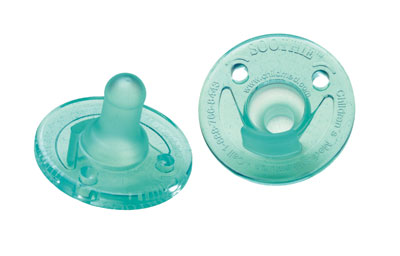Jaundice in Newborns
Jaundice in Newborns
What is jaundice?
Jaundice is very common in newborn babies. It makes a baby’s skin and the whites of the eyes turn a yellow color. Most jaundice is not severe and complications can usually be prevented.
Jaundice is a condition where a newborn baby’s skin turns yellow because a high amount of bilirubin is produced or because the liver can’t get rid of it quickly enough. Bilirubin is a brownish-yellow substance that is produced after red blood cells have been broken down. The body gets rid of bilirubin through the stool (poo).
How is jaundice treated?
Most of the time, jaundice goes away on its own. Sometimes babies will need help to get their bilirubin levels down. One way to do this is with phototherapy, where your baby’s skin is exposed to light. The skin absorbs the light and changes the bilirubin so that his body can more easily get rid of it in stool and urine. Phototherapy is usually done in a hospital, but sometimes babies can be treated at home. Exposing your baby to sunlight (directly or indirectly) can be harmful. Do not do this without first discussing with your health care provider.
Is Phototherapy safe?
Phototherapy is safe. Your baby’s eyes will be protected with special eye patches. Phototherapy can sometimes cause skin rash or loose bowel movements. Your baby may need extra fluids, such as more frequent breastfeeding.
When should I be more concerned about jaundice?
Jaundice can be more serious for some babies, including babies:
- born before 37 weeks gestation.
- who weigh less than 2500 grams (5.5 lbs) at birth.
- whose blood group is incompatible with their mothers’ blood group.
- who develop jaundice early in life, especially during the first 24 hours.
- whose jaundice has moved into the arms and legs.
- who have a lot of bruising or swelling under the scalp (called caput) after birth
- whose siblings had jaundice at birth and needed treatment with an exchange transfusion (baby’s blood is removed and replaced).
What are the symptoms of jaundice?
Jaundice is very common in newborn babies. It makes a baby’s skin and the whites of the eyes turn a yellow color. You may notice it between 1 and 4 days after your baby is born. It will first appear on your baby’s face and chest.
Babies who have higher levels of bilirubin (severe jaundice) may seem very tired and cranky, and feed poorly because they are too hard to wake up.
Will jaundice hurt my baby?
Most jaundice is not harmful to your baby and disappears when your baby’s body learns to deal with bilirubin. But in some babies there is so much bilirubin that it can be harmful. If the level of bilirubin becomes very high it can affect some of your baby’s brain cells.
In rare cases, severe jaundice can cause seizures (convulsions) or lead to deafness, cerebral palsy or serious developmental delay. Fortunately, most jaundice is not severe and complications can usually be prevented.
How can I prevent jaundice?
Feeding (especially breastfeeding) your baby frequently in the first hours and days after his birth helps reduce the risk of jaundice. Feeding often will make your baby pass more stool. The milk also gives your baby’s liver the energy it needs to process the bilirubin. Your baby’s stool should turn from dark green to yellow.
If you are having trouble with breastfeeding, it is important to get help. It might be necessary to offer your baby supplementary feeds of formula to avoid dehydration and to keep the jaundice from getting worse.
How do I know if my baby’s bilirubin levels are too high?
There is a blood test to measure the amount of bilirubin in your baby’s body. In many hospitals, bilirubin levels are routinely checked before you take your baby home. Your health care provider can plot your baby’s result on a graph if they know exactly how many hours old your baby was when the test was performed.
The information should be given to you when you and your baby leave the hospital. If the test shows that your baby is at risk for reaching a level of bilirubin that needs treatment, your doctor will arrange a follow-up visit and will do another test.
After I leave the hospital, when should I call my doctor?
Call your doctor if your baby shows any of the following symptoms:
- refuses breastfeeding or bottle feeding,
- is sleepy all the time,
- has lost a lot of weight (more than 10% of her weight at birth),
- is extremely jaundiced (arms and legs are a yellow or orange color), or
- jaundice that seems to be getting worse.






Recent Comments